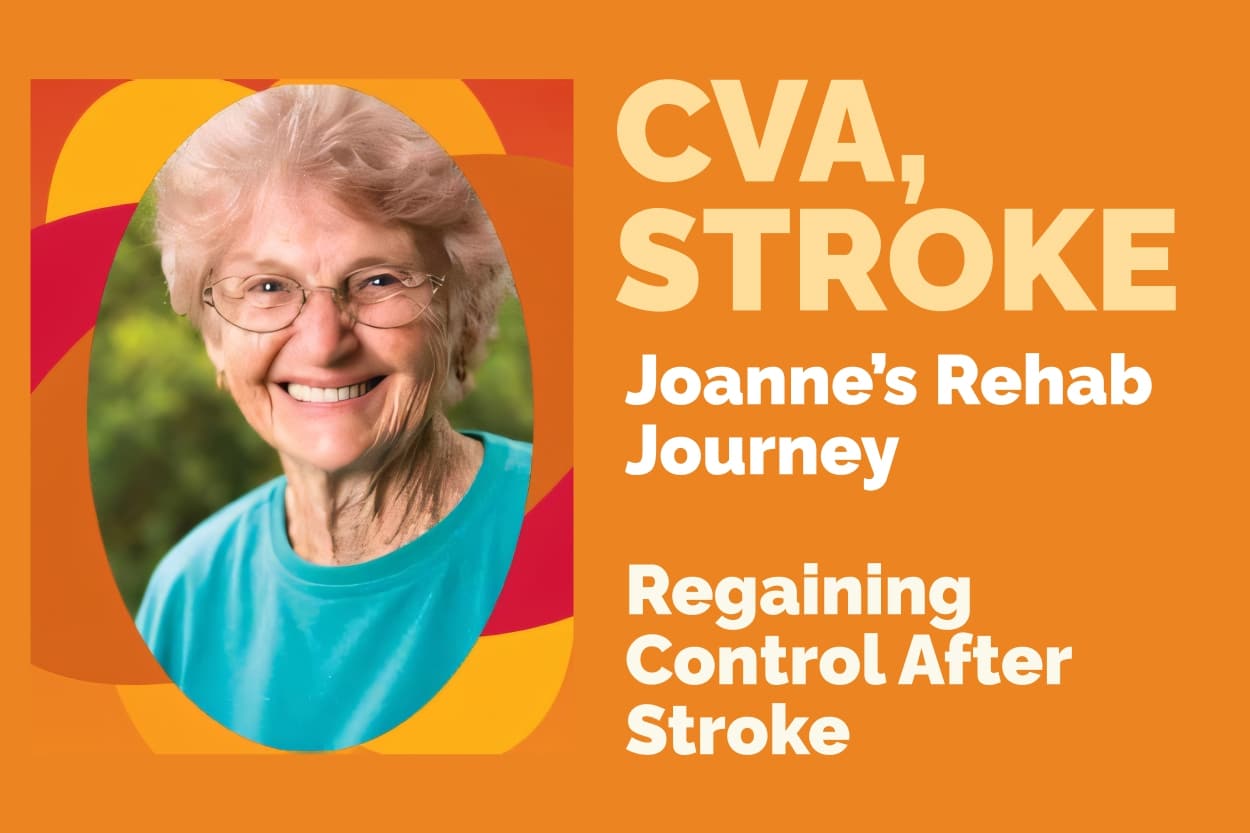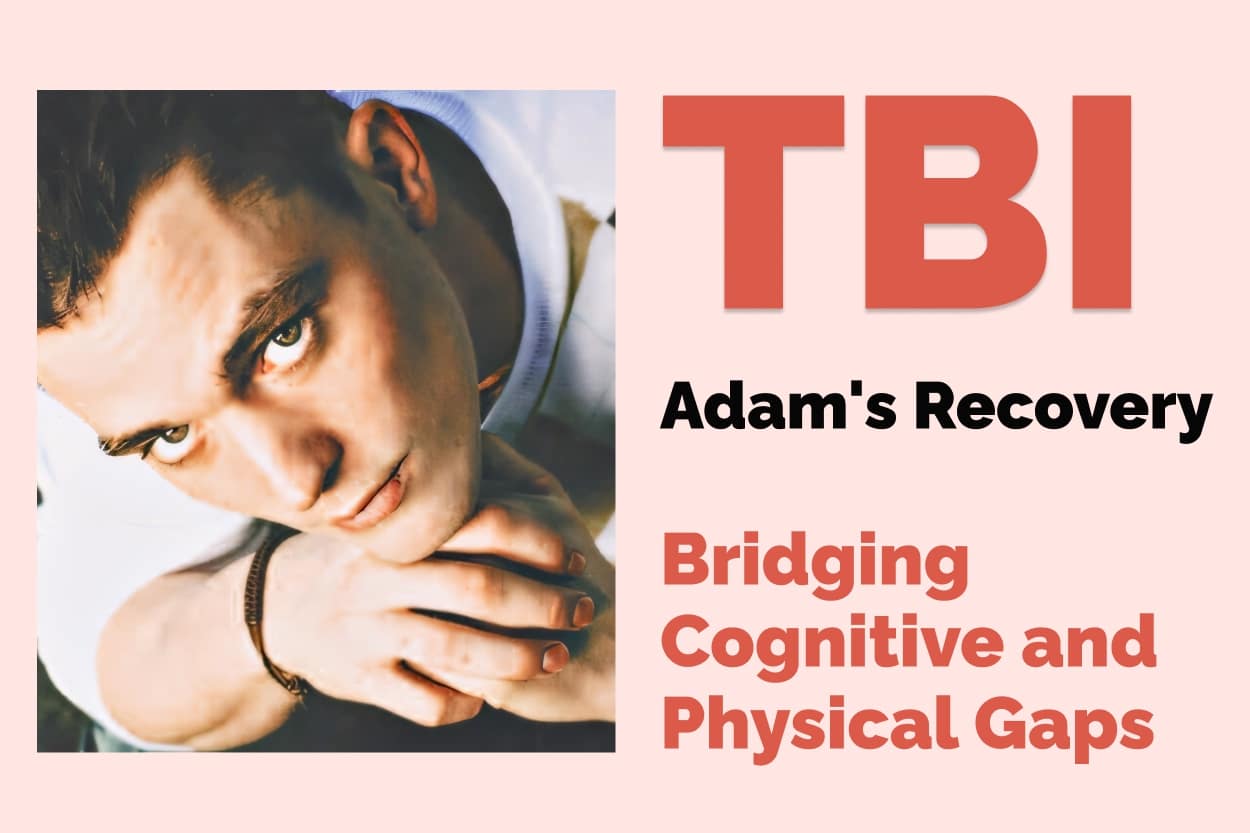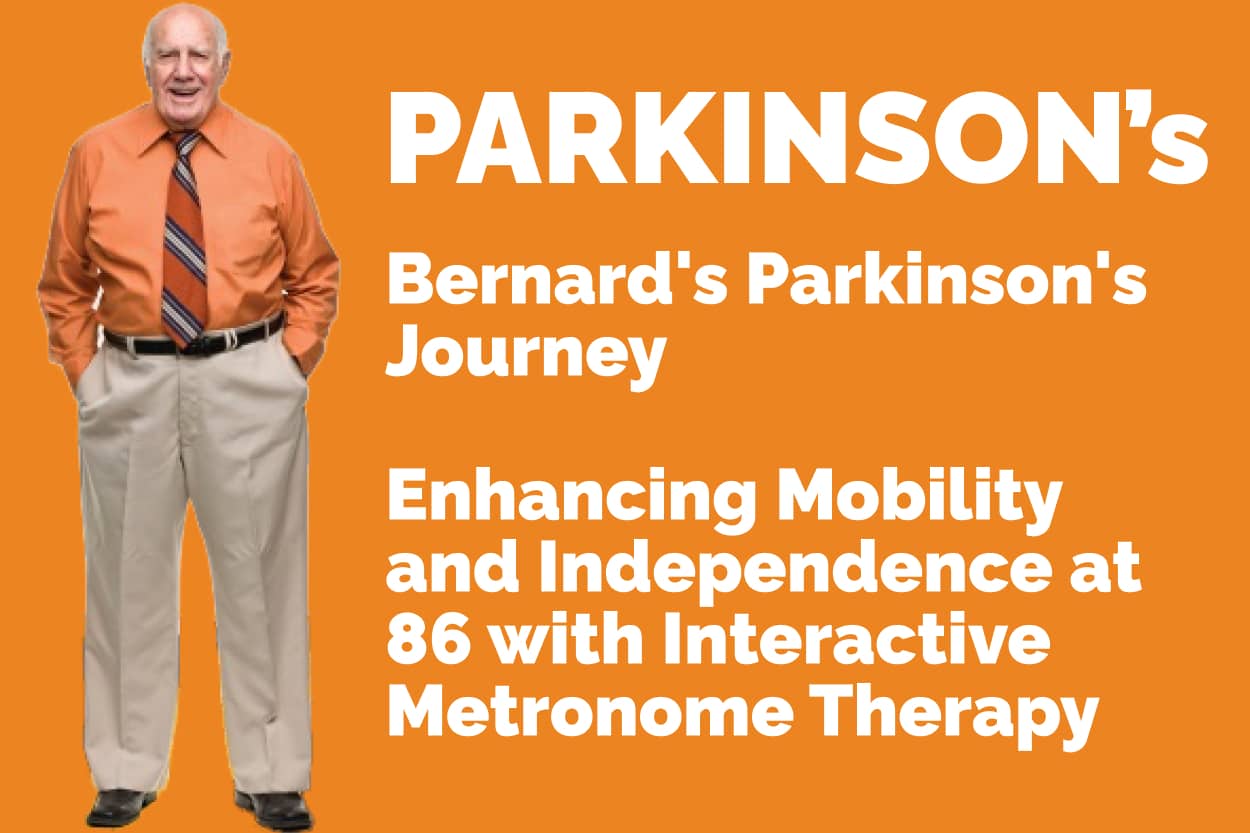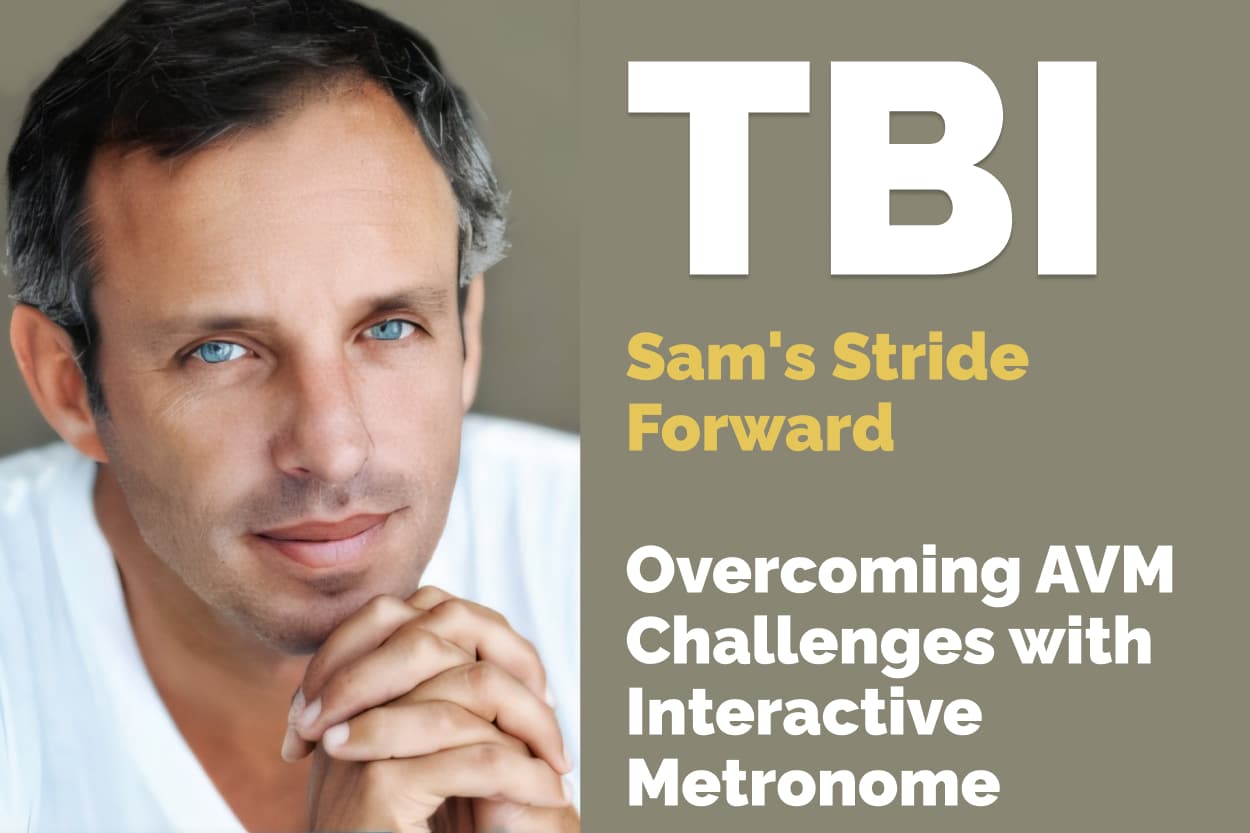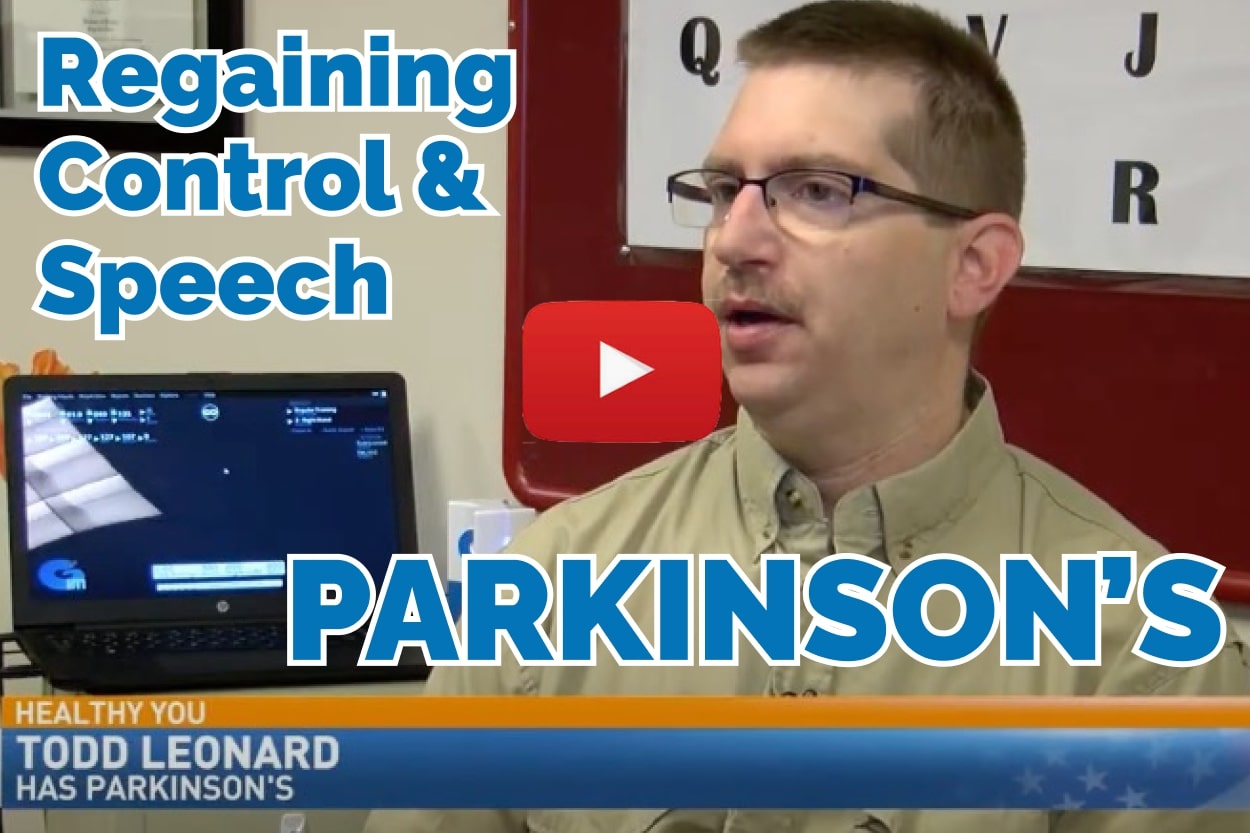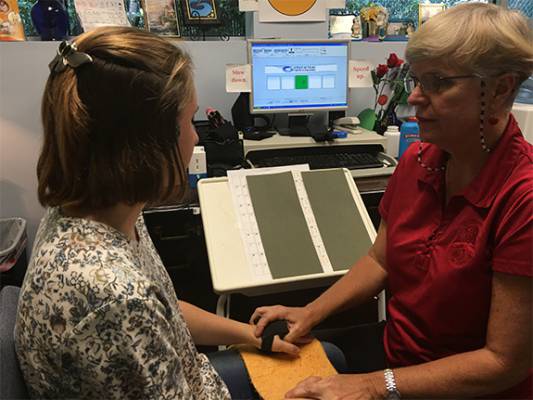Interactive Metronome Testimonials
Filter Your Results
After witnessing her grandchildren’s improvements with Interactive Metronome (IM), Joanne, a 68-year-old pastor’s wife who had suffered a mild stroke, embarked on her own IM journey. Despite initial challenges such as left side weakness and migraines, Joanne’s tailored IM program, starting once a week and gradually increasing, allowed her to regain physical and mental stamina. Incorporating IM Home into her routine, she made remarkable progress, ultimately reclaiming her active life in her church and family.
Adam, a 28-year-old experiencing cognitive and physical deficits from an anoxic event, saw remarkable improvements in auditory processing, attention, and organization through Interactive Metronome (IM) therapy. Initially struggling with coordination and impulsivity, Adam achieved a 75% improvement in timing and rhythm, which translated to better concentration, reduced impulsivity, and enhanced motor skills. His journey underscores the transformative potential of IM in rehabilitating both brain and body after injury.
At 86, Bernard faced challenges from Parkinson’s Disease and recovery from surgery but found significant improvements in mobility and daily function through Interactive Metronome (IM) therapy. Incorporating IM into his rehabilitation, Bernard regained independence for basic tasks and continued active involvement in his business. His commitment to IM therapy, even engaging his assistant Ernie in sessions, showcases the impact of rhythm and timing exercises on improving life quality, even in advanced age.
Sam, a 39-year-old man with arteriovenous malformation (AVM) complications, including left side hemiparesis and severe cognitive deficits, found hope and progress through Interactive Metronome (IM) therapy. Despite initial extreme deficiencies, Sam’s dedication to IM training led to significant improvements in balance, coordination, attention, and cognitive functions. His journey demonstrates the effectiveness of tailored IM therapy in addressing both physical and cognitive rehabilitation needs, culminating in notable improvements in his motor and cognitive skills.
After a cerebral incident left Jason, a 33-year-old finance professional, with severe memory and attention deficits, he embarked on a journey of rehabilitation including cognitive therapy with Interactive Metronome (IM). This tailored therapy improved his vigilance, memory, and ability to manage complex tasks simultaneously. Jason’s return to his demanding job in finance, now with enhanced focus and cognitive function, underscores the effectiveness of IM in restoring essential cognitive skills needed for professional success.
Todd Leonard, diagnosed with Parkinson’s at 42, found improved motor skills and communication through Interactive Metronome therapy at Health Source. The therapy, involving a metronome to aid in synchronizing motor planning, has enabled Todd to regain control over his movements and speech, showing significant progress. Health Source plans to further integrate metronome use in various therapeutic areas, aiming to enhance patients’ daily lives.
Randolph is a successful, 50-year-old professional diagnosed with ADHD. He felt he could handle any single task efficiently but he would lose focus when he tried to do two tasks simultaneously. For instance, his inability to drive his car and carry on a conversation at the same time. Randolph was hopeful that Interactive Metronome® might help him.
17 year old Megan is not your typical teenager as she struggles with APD, understanding conversational speech and forgetting words and instructions she should know. Diagnosed with Visual Processing Disorder, Impairment of Auditory Discrimination, Hyperacusia, Specific Reading Disorder, and Mathematics Disorder. Megan was five years delayed in her vocabulary skills and her ADP was so severe it was hindering her everyday comprehension skills. Until starting the Early Intervention program which uses Interactive Metronome.
Frederick Davis, a 49-year-old who lost both legs to infection, showcases the benefits of Interactive Metronome (IM) therapy in regaining mobility. This unique timing and synchronization therapy has been pivotal in helping him relearn to walk, enabling his return to normal activities and fueling his desire to inspire others facing similar challenges.
Sean was adopted at nine months old, now 11 years old, lives with his mother, father, and two sisters. For much of his life, Sean has suffered from mood swings, severe behavioral problems, and difficulty sleeping. He’s been diagnosed with several different disorders, including Cognitive Deficits, Attention Deficit Hyperactive Disorder (ADHD), Obsessive-Compulsive Disorder (OCD), Post-traumatic Stress Disorder (PTSD), Pervasive Development Disorder (PDD), and possible Ring 21 Syndrome. He takes several medications to manage these conditions. When Sean first started IM, his performance measured in the extreme deficiency range. His speech-language, listening, and comprehension skills were also far below average. He also struggled with low self-confidence. During the course of the IM, Sean showed marked gains. Sean’s mother reports a fantastic improvement in his behavior at home, as well as his attitude toward education and social skills. She credits the IM program with restoring hope for her little boy, where medication and traditional therapy had failed.
At home, Kandyce’s mom noticed improvements too; she did her homework without being told, and even started reading in her free time. She stayed in school and proudly passed the ninth grade and is now in tenth grade. Kandyce is noticeably more self-assured and confident. With her improved coordination and increased confidence, she plans to try out for the soccer team in the spring!
Sam is an 8 year, 9 month old male with no significant medical history. Born at 38 weeks gestation, with a birth weight of 8 pounds, 9 ounces, he achieved developmental milestones on time. He has a history of frequent ear infections, but no PE tubes were placed. Sam is not currently taking any medication. At this time, he receives speech therapy for phonemic awareness and articulation and is diagnosed with ADHD. He has an IEP which allows him additional time for completion of tasks and help for speech-related issues. Sam is experiencing difficulty with reading/decoding/spelling, staying on task, and with writing skills.
Steven is a 9-year-old boy who had been diagnosed with ADHD and Dyslexia. He and his mother were very concerned with his academic performance due to his trouble with processing and writing output. IM training was introduced to help Steven overcome his timing, handwriting and coordination skills. After 3 months of IM training, the distractions were now easy to “tune out” and his handwriting skills had improved tremendously, both Steven and his mother feel hopeful and confident as he begins his 4th-grade year!
15-year-old Cara was diagnosed with Fetal Alcohol Syndrome after being adopted at a young age, her family noticed she had some trouble paying attention and focusing. Her inability to concentrate continued to increase as she started having difficulty in school. In her initial IM training, it was revealed that she also had some fine motor issues. She was very impulsive and usually needed directions to be repeated.
Samuel, an 18 year-old boy, was seen for a speech and language evaluation based on physician referral for speech-language deficits secondary to Autism and ADHD. During the evaluation, his parents expressed concerns about Samuel’s overall speech and language skills. They reported that he has difficulty with the following: reading comprehension, auditory processing, attention and focusing, following complex directions and conversational skills such as initiating, maintaining and terminating a conversation.
Seven months later, Virginia was faced with the amputation of her left leg because of osteomyelitis. This time, her pre-prosthetic training incorporated Interactive Metronome® exercises.
Her MRI showed mild cortical involution and periventricular white matter. She began IM treatment, and initially she was very receptive to treatment, although, she did have trouble maintaining cognitive as well as physical stamina. Balancing exercises were also an issue for her.
Darren began IM training at the age of 8 when his mother noticed his difficulty with communicating. Darren was often left frustrated when trying to talk to his peers due to his speech and language impairments. He was unable to express himself clearly. He began IM training in the severe deficiency range but improved vastly, with advancement in his communication and speech and scoring in the average range. The best part, his mother says is that he is still the same happy and fun-loving boy.
Natalie has suffered a 20 year battle with depression. Not only does it run in her family but she also went through severe postpartum after the birth of her daughter. Before IM, she experienced agitation and anxiety along with depression, which affected her daily life. After IM, she is better with decision making on a daily basis and looking forward to the future.
Simon, 24 years old, had a traumatic brain injury a year ago due to gun shot wounds. He is blind in his left eye and only has a quadrant of vision in his right. This caused Simon to have trouble with concentrating as well as safety judgment. He began IM after five months of a brain program. IM helped him with is attention and concentration along with helping him feel more calm in social situations.

